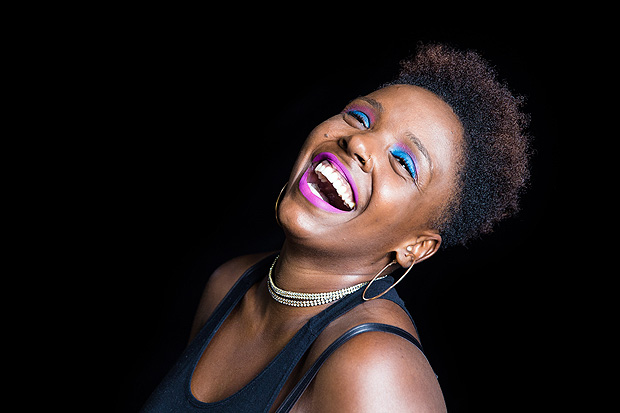Latest Photo Galleries
Brazilian Markets
17h33 Bovespa |
-0,33% | 125.148 |
16h43 Gold |
0,00% | 117 |
17h00 Dollar |
-0,77% | 5,1290 |
16h30 Euro |
+0,49% | 2,65250 |
ADVERTISING
Brazilian Artist Wants to Use Dance to Fight Racism
12/09/2016 - 02h27
Advertising
CARLOS D. WILLIAMSON
FROM SÃO PAULO
Sporting a crop top, short shorts and a high-top fade, Val Souza strolls into Sesc Pompeia's open venue, gliding her portable cooler decorated with pink and green LED strip lights.
Before the show starts, she reaches into her cooler and pulls out a bottle of vodka in front of some fans and a few unsuspecting onlookers.
She pours the alcohol into a clear pink cup and hands it to a confused spectator. "Drink with me," Souza says, as she turns on the nearby speaker.
Some of the passersby stop to check out the commotion and shake their heads, as Souza squats and begins to dip her backside lower and lower.
An elderly woman shuffles past her and whispers, "I don't want to see this; get out of here." But others watching move toward Souza and dance along to the rhythm of Brazilian funk music.
"My body is a body that moves," says the 31-year-old artist and performer.
In honor of Dia da Consciência Negra (Black Awareness Day), which was celebrated on Nov. 20, Souza performed "Can You See it?" at Gritem-me Negra!, an event, which ran the entire month of November, featuring performances, lectures and art exhibits centered around black feminism in Brazil.
When Souza graduated from Escola Técnica de Artes do Estado de São Paulo (a public college that specializes in art) in 2014, she wanted to do more than just talk about the issues black women face with family and friends.
The São Paulo native says she began thinking about how women of color are often marginalized in ways that women with privilege aren't.
So the following year, Souza put her degree in dance to use by showing how women who look like her are disenfranchised in Brazil.
"The objectification of black women's bodies is a real problem in this country," she says, highlighting the theme of her performance.
"When I'm out there dancing, I'm celebrating my body as a black woman."
Architect and black activist Joice Berth says Souza's art resonates with her audience because she's "your everyday black woman, expressing her pain in a way that's relatable."
She went on to say that it's imperative that young black girls are exposed to women in positions of power and influence like Souza.
"Val's art is unique and could not be replicated by white women," Berth says.
"This doesn't mean that white women can't help further the cause. But they're looking from the outside in. These stories need to be told by the person suffering."
Journalist and producer Maitê Freitas says since issues that concern black women are usually put on the back burner, it's important that the few women who have a platform use it.
While Souza wants to amplify the voices of black women, she says she is often labeled as a black artist or an activist.
"I am an artist, and what I do is art," says the performer. "People always say that I'm a black artist. I am a black woman, who happens to be an artist – there's a difference between the two. Being a black woman helps me relate to issues within my community. I just have an afrocentric view of things."
| Alberto Rocha/Folhapress | ||
 |
||
| Brazilian artist Val Souza, 31 |



